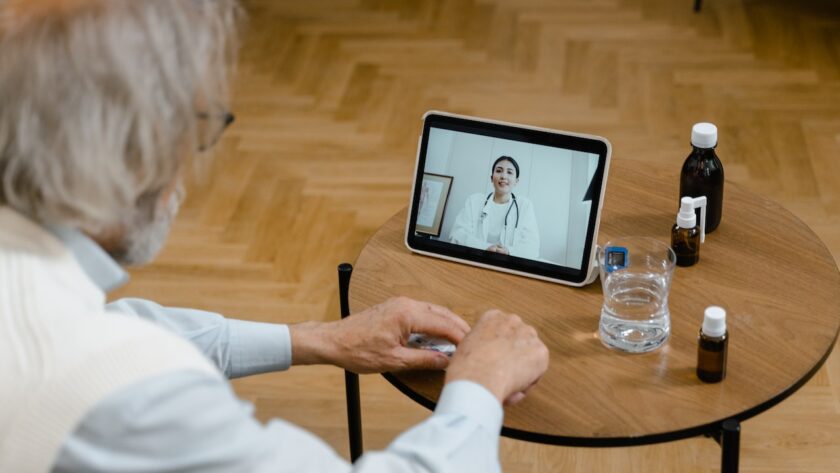Virtual healthcare refers to all forms of telehealth and digital health services. It includes asynchronous communication, whereby patients upload data like food logs, medication records, and test results, and synchronous communications involving doctors and patients.
It reduces healthcare costs, with a Towers Watson study suggesting it could result in $6 billion per year in savings from better management of chronic diseases, shared healthcare professional staffing, reduced travel times, and fewer or shorter hospital stays.
Access
The benefits of virtual healthcare, which includes telehealth and digital health, help to alleviate strain on healthcare offices and emergency rooms by allowing patients to seek advice from medical professionals without visiting a clinic. It is also useful for people who may not be able to travel, such as those living in remote areas or those who are housebound due to physical limitations.
Despite the increase in popularity of virtual healthcare during the COVID-19 pandemic, some people still need more easy access to the technology. For example, a virtual visit with a specialist without your medical records could leave you vulnerable to misdiagnosis or inappropriate treatment.
Poor internet connectivity is also a major hurdle for virtual care adoption, especially in rural areas. The rapid growth of cellular network coverage in India and many other emerging economies can help resolve this problem. However, addressing differences in tech-savvy knowledge, awareness, and trust will ensure universal healthcare access via telehealth and other digital health solutions.
Convenience
Virtual healthcare includes synchronous and asynchronous interactions between a patient and a physician – for example, real-time, video-based sessions or technology to record at-home metrics like blood pressure or glucose levels for the doctor to review. Non-clinical roles can also be involved, such as IT personnel, administrative transcriptionists, and even organization executives.
Virtual health visits can be more convenient than traditional in-person office appointments for many patients, especially those with chronic conditions. For instance, they can avoid time-consuming activities such as sitting in the waiting room or commuting to the doctor’s office for an appointment, saving valuable time for busy people.
In addition, many people can complete their appointments on their schedule without requesting a day off or coordinating childcare. These factors can help expand access for certain populations that may otherwise need help with traditional office-based visits, such as older adults or those in rural areas with limited transportation options. However, some patients still need help with virtual care due to low digital literacy and the cost of data connectivity.
Ease of Use
For patients, virtual healthcare eliminates the need to travel in person to get the care they need. Whether they’re looking for a quick check-in with their doctor or need some support managing their chronic health condition, they can connect with the healthcare professional they trust from the comfort of home.
For many patients, this also means they can avoid the stress and expense of getting to the doctor’s office – especially in areas with limited access. Plus, with telehealth options available to patients, it’s easier for them to avoid skipping visits and potentially missing out on important health information.
Telehealth provides flexibility and convenience for healthcare practitioners, improving patient satisfaction and making medical practice management easier. For example, some telemedicine companies offer yearly memberships for unlimited online consultations with a specific virtual specialist. This helps reduce billing costs and ensures that patients can continue to connect with a healthcare professional they know and trust.
Affordability
Many patients face financial hurdles to seeking healthcare. Fortunately, virtual care can provide an affordable solution to meet their needs. Depending on their preferences and technology literacy, patients can connect with providers using videoconferencing, a smartphone app, or text messaging.
This option can also help reduce healthcare costs by diverting them from more costly care settings, like the emergency department. One study found that avoiding an emergency department visit garnered cost savings per visit.
Additionally, the flexibility of telehealth helps reduce expenses by eliminating travel time and the need for a patient to take time off work or find child care. Those savings add up, especially for chronic conditions requiring ongoing monitoring. Ultimately, the affordability of virtual health will likely be determined by payers’ willingness to provide incentives to encourage adoption. Waiving copayments, implementing specialized telehealth workflows for diverse populations, and encouraging more culturally competent, patient-centric virtual care may all boost uptake. And ultimately, drive cost savings for the entire system.
Personalized Care

In a consumer-centric world, consumers want tech solutions that leave them feeling connected to their providers. This desire has also bled over into healthcare, and many patients now appreciate the convenience of virtual health visits.
For people who live far from a doctor’s office or hospital, telehealth options allow them to connect with specialists from their home, workplace, or anywhere else they have internet access. This expands access to care and can reduce travel expenses for patients and caregivers.
Additionally, telehealth provides an opportunity for more personalized care for people living with a chronic condition, such as diabetes. This includes remote patient monitoring, asynchronous communication (like text messaging), and virtual meetings where the provider can review at-home data such as blood pressure or glucose readings. These services can help improve outcomes, reduce costs, and improve patient-physician relationships.




